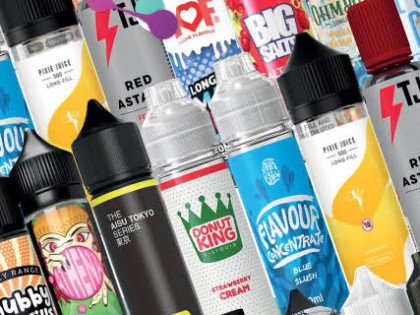Dawkins, along with Catherine Kimber, Mira Doug, Colin Feyerabend and Olivia Corcoran looked at how vapers self-dose nicotine in order to meet and not exceed their needs. Firstly, they referred to how smokers operate – especially when moving to lower-nicotine cigarettes.
It was suggested to the team that vapers also increase the duration of frequency of puffs when moving to a lower-nic juice.
She referred to a previous study looking at 14 vapers using 18mg-containing cartomisers. Some were barely getting 2 nanograms of nicotine per millilitre of blood after vaping for 10 puffs. Others were obtaining a rapid intake of 15-30 nanograms (found in tobacco smokers), within five minutes.
This study set the scene for the new piece of research, and was framed against the new Tobacco Products Directive imposing a 20mg/ml limit on eliquids from February 2017. We know that 9% of current vapers use strengths over that threshold, this equates to around 200,000+ vapers, but many switching from smoking beginning at a higher concentration too.
The team were interested to discover how vaping behaviour changes when given lower nicotine liquids. They were also concerned about the subjective effects, such as cravings and withdrawal, and how plasma nicotine levels fluctuated.
They used the Evic Supreme as it contains a puff counter and also includes software enabling the team to analyse puff duration and number of puffs over a vaping period. Subjects were selected and had the continine level measured in their saliva. Then, after going overnight without vaping, they were asked to rank how badly they needed to vape. After vaping for 10 minutes, the subjects had nicotine blood levels measured and gave their scale of craving after 10, 30 and 60 minutes. After an hour they rated their positive and negative symptoms on a scale.
They found clear evidence of compensatory behaviour as vapers made more puffs and for longer when the level of nicotine in the liquid was reduced. What was noted though, the level of nicotine in the blood plasma remained far lower when using the 6mg juice despite the change in puffing behaviour.
The change in puffing did attempt to compensate for the drop in nic led the team to believe that the behaviour change was sufficient to address desire/need, although they note the sample size is small and may not reflect vapers as a whole. Although the subjects reported a variation in quality of “hit” and “satisfaction” between high and low nicotine, they don’t believe there was a sufficient statistical variation worthy of note.
In conclusion, the team believes that vapers can effectively overcome reduced nicotine concentrations in order to achieve satisfaction by adjusting their vape behaviour, thereby reducing withdrawal symptoms. But this does leave open the door to objections based on more frequent vaping and it being done at higher wattages – something Dr Farsalinos has linked to the production of unwanted chemical products. This is one of the reasons the team suggest it is better to recommend that vapers use a higher rather than a lower concentration of nicotine in their juices. Dawkins pointed out that limiting the concentration of liquids would not lead to improve safety but could lead to adverse health effects.
The ability for vapers to self-titrate nicotine does indicate why vaping is more popular than traditional nicotine replacement products that do not offer that ability.
Photo Credit:
Slides from the Youtube presentation https://youtu.be/3n6GYFr7Ss0
Dave Cross
Journalist at POTVDave is a freelance writer; with articles on music, motorbikes, football, pop-science, vaping and tobacco harm reduction in Sounds, Melody Maker, UBG, AWoL, Bike, When Saturday Comes, Vape News Magazine, and syndicated across the Johnston Press group. He was published in an anthology of “Greatest Football Writing”, but still believes this was a mistake. Dave contributes sketches to comedy shows and used to co-host a radio sketch show. He’s worked with numerous start-ups to develop content for their websites.
Join the discussion
Harm Reduction For The Rich
The United Kingdom risks becoming a harm reduction country only for the wealthy, according to Michael Landl of the World Vapers’ Alliance
Longfills as an Alternative to Disposables
The disposable vape ban will impact many people, but there’s no reason to be concerned… Grab yourself a pod kit and a Longfill and you’ll be back to vaping the way you want to, just in a cheaper, more environmentally friendly and legal way.
COP10 is a Threat to Safer Nicotine Products
The EU obscures its position on low-risk alternatives to smoking before the WHO COP10 conference in Panama, starting Monday
Nicotine Is Not A Culprit
Planet of the Vapes has always encouraged smokers to use the quit product that works best for them, and snus is a product that seems to be unfairly blocked because it contains nicotine






-listing400.jpg)




